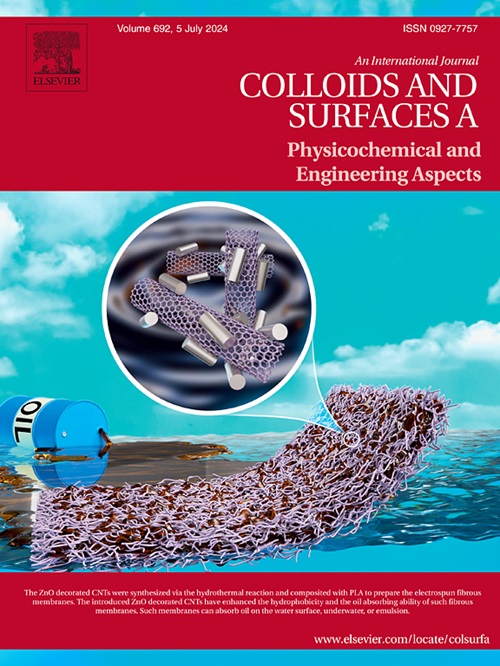阐明累积辊接变形路线对 AA2024 铝合金电化学和被动行为的影响
IF 5.4
2区 化学
Q2 CHEMISTRY, PHYSICAL
Colloids and Surfaces A: Physicochemical and Engineering Aspects
Pub Date : 2024-10-26
DOI:10.1016/j.colsurfa.2024.135653
引用次数: 0
摘要
研究了 AA2024 铝合金在磷酸盐缓冲溶液(pH = 9)中的变形路径变化和结晶纹理与电化学特性的相关性。商用 2024 铝合金板材在室温下使用两种不同的变形途径:累积轧辊粘结 (ARB) 和交叉累积轧辊粘结 (CARB),进行了多达八次的循环加工,每次循环之间绕法线方向 (ND) 轴旋转 90°。经过 ARB 处理的 AA2024 合金呈现出细长的片状超细晶粒结构,其中包括铜 {112}<111>、Dillamor {4 4 11}<11 11 8>、S {123}<634>、黄铜 {110}<221>和 P {110}<221>等织构成分。同时,CARB加工的AA2024合金具有近似等轴的超细晶粒结构,尺寸为150-100 nm,纹理成分包括铜{112}<111>、黄铜{011}<211>、P {110}<221>、旋转立方体{001}<110>、S {123}<634>和戈斯{011}<100>。研究发现,不同变形过程中电化学性能的变化与纹理操作和微观结构密切相关。ARB 加工路线产生的片状超细晶粒结构增加了腐蚀电流密度,而 CARB 路线则观察到相反的趋势。此外,研究还得出结论,通过 CARB 加工实现的均匀晶粒细化和高强度{011}取向纹理相结合,为形成具有优异保护性能的被动层提供了理想条件。本文章由计算机程序翻译,如有差异,请以英文原文为准。
Elucidating the effect of accumulative roll bonding deformation routes on the electrochemical and passive behavior of AA2024 aluminum alloy
The correlation of deformation route changes and crystallographic texture with the electrochemical properties of AA2024 aluminum alloy in a phosphate buffer solution (pH = 9) was investigated. Commercial 2024 aluminum alloy sheets underwent up to eight cycles of processing at room temperature using two different deformation routes: accumulative roll bonding (ARB) and cross accumulative roll bonding (CARB), involving a 90° rotation around the normal direction (ND) axis between each cycle. The ARB-processed AA2024 alloy exhibited an elongated lamellar ultrafine-grained structure and included texture components such as Copper {112}<111>, Dillamor {4 4 11}<11 11 8>, S {123}<634>, Brass {110}<221>, and P {110}<221>. Meanwhile, the CARB-processed AA2024 alloy had a near equiaxed ultrafine grain structure with a size of 150–100 nm and texture components including Copper {112}<111>, Brass {011}<211>, P {110}<221>, Rotated Cube {001}<110>, S {123}<634>, and Goss {011}<100>. The study revealed that the variation of electrochemical properties during different deformation routes was closely linked to texture manipulation and microstructure. The lamellar ultrafine-grained structure resulting from the ARB processing route increased the corrosion current density, whereas the opposite trend was observed in the CARB route. Moreover, it was concluded that the combination of uniform grain refinement and high-intensity {011} orientation textures achieved through CARB processing provided ideal conditions for forming a passive layer with superior protection properties.
求助全文
通过发布文献求助,成功后即可免费获取论文全文。
去求助
来源期刊
CiteScore
8.70
自引率
9.60%
发文量
2421
审稿时长
56 days
期刊介绍:
Colloids and Surfaces A: Physicochemical and Engineering Aspects is an international journal devoted to the science underlying applications of colloids and interfacial phenomena.
The journal aims at publishing high quality research papers featuring new materials or new insights into the role of colloid and interface science in (for example) food, energy, minerals processing, pharmaceuticals or the environment.

 求助内容:
求助内容: 应助结果提醒方式:
应助结果提醒方式:


